We will be out of office 12/23 - 1/1. Happy Holidays!
Limited Edition: eeBrakes Magnum
Previous slide
Next slide
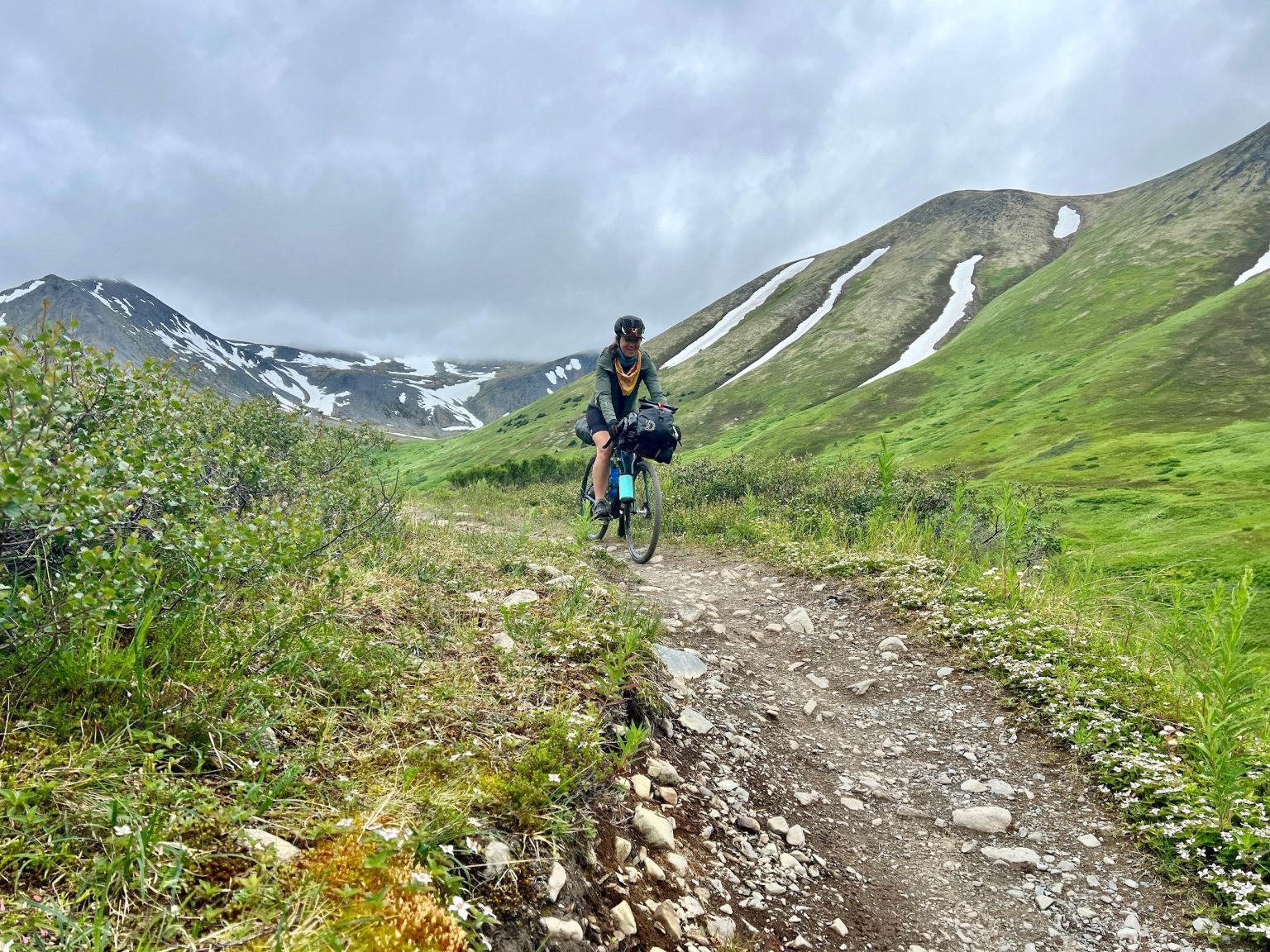
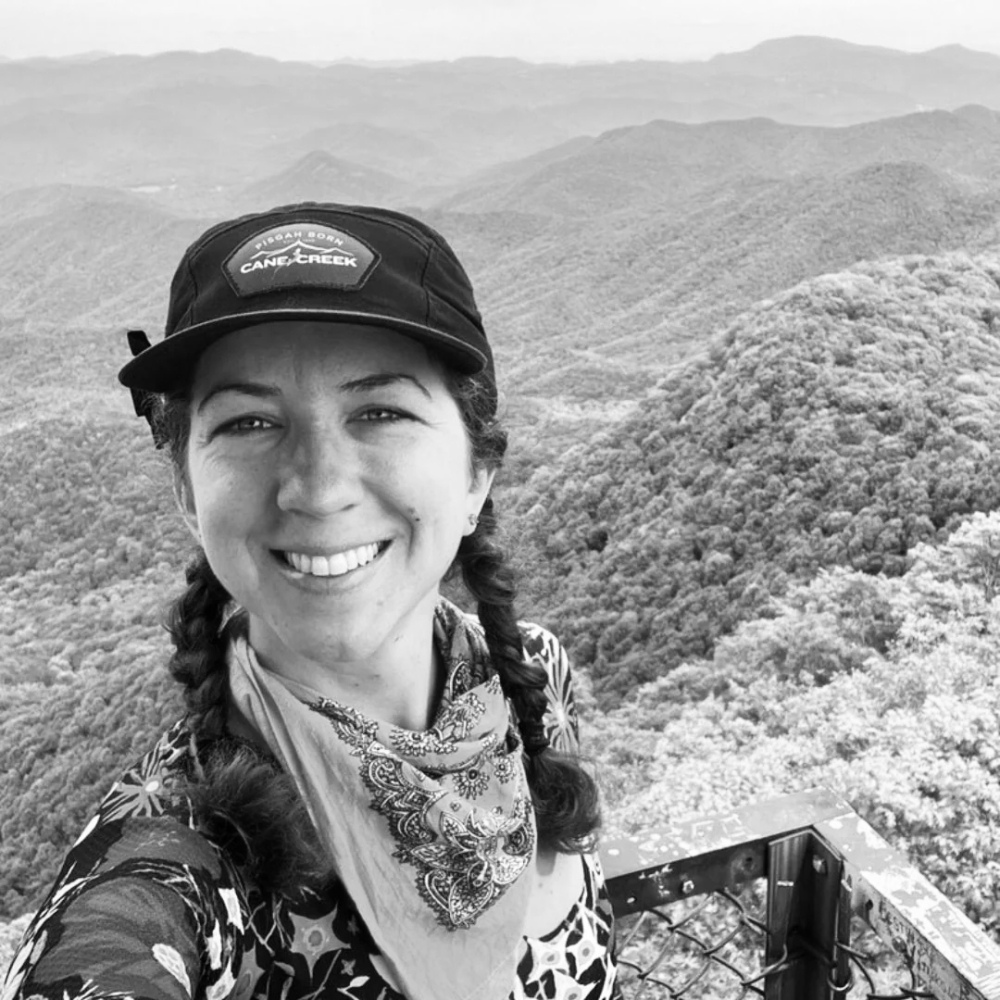
Mary McGowan is a school-based Speech-Language Pathologist in Greenville, SouthCarolina. She has been a car-free bike commuter for over 9 years and enjoys bikepacking adventures on her summer breaks from work. Her favorite adventures on the bike include; Iceland, Alaska, and exploring gravel routes out West. Mary also volunteers with Bike Walk Greenville, a local nonprofit focused on infrastructure advocacy.
While I love living in the Upstate of South Carolina, I must confess that I also love escaping the summer heat on my summer break from work to adventure somewhere with cooler temperatures. After taking on Iceland last summer, I felt ready to explore Alaska this time around, with much of the same gear. Although I wasn’t taking on a race event during this trip, I packed up my Cervelo Aspero outfitted with Cane Creek components once again to be ready for crumbling but mostly paved roads and logging many miles with a relatively lightweight bikepacking setup. Once I let my friend Laura know that I stole a route idea that she had shared with me awhile back, she managed to squeeze in the time off to join me to ride the majority of the route. (Pro tip: find an engineer to travel with who will make a spreadsheet itinerary and do most of the planning for you.. and double check the ferry departure dates!) From the wildlife encounters to the breathtaking mountain views, this trip lived up to its bucket list ideals that we imagined – and has us already dreaming up our next trip up to the Last Frontier.
Our journey began on Saturday, June 22 when Laura and I flew into Juneau, Alaska. After assembling our bikes at the airport, we rode out to Mendenhall Glacier. Arriving around 9 p.m., the long Alaskan summer daylight allowed us to enjoy the glacier in near solitude—a surreal experience, especially knowing how crowded it had likely been earlier in the day. After soaking in the views, we headed to our campground to rest up for an early start the next day.
The next morning, we took a 7 a.m. ferry to Haines, as there are no roads out of Juneau – all travel to this city of 30,000 residents happens by air or by sea! The ferry ride was a scenic introduction to the breathtaking landscapes we would encounter over the next few weeks. After arriving in Haines, we enjoyed a delicious lunch and stocked up on essentials we couldn’t fly with, including CO2 cartridges and camp stove fuel. We then enjoyed a 40-mile ride out of Haines to meet our hosts for the night, a couple we connected with through the Warm Showers bike travel hosting network. Side note: if you haven’t experienced the magic of Warm Showers, I can’t recommend it enough. Not only did hosting travelers inspire me to start my own solo bikepacking adventures back in 2018, but as a guest I have met some of the most interesting and kindhearted people that have welcomed me into their home and created extra special memories along the way.
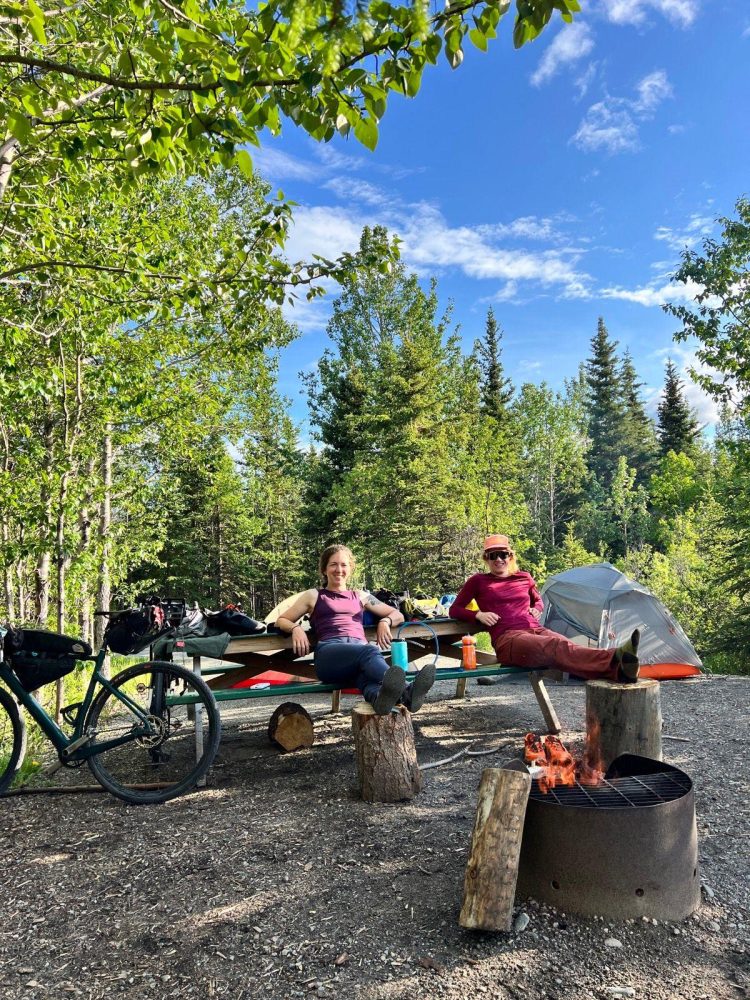
June 24: Crossing into Canada and Camping at Million Dollar Falls
Monday felt like our first ‘full’ day of riding, and we enjoyed miles of stunning mountain vistas as we crossed the border into Canada. Clear skies gave us rare, unobstructed views of the surrounding peaks—something we didn’t take for granted in a region known for its rainy weather. That night, we camped at Million Dollar Falls and enjoyed free firewood — a welcome amenity in the Canadian territorial campsites that wasn’t needed for warmth, but did help keep the infamous Alaskan mosquitos at bay.
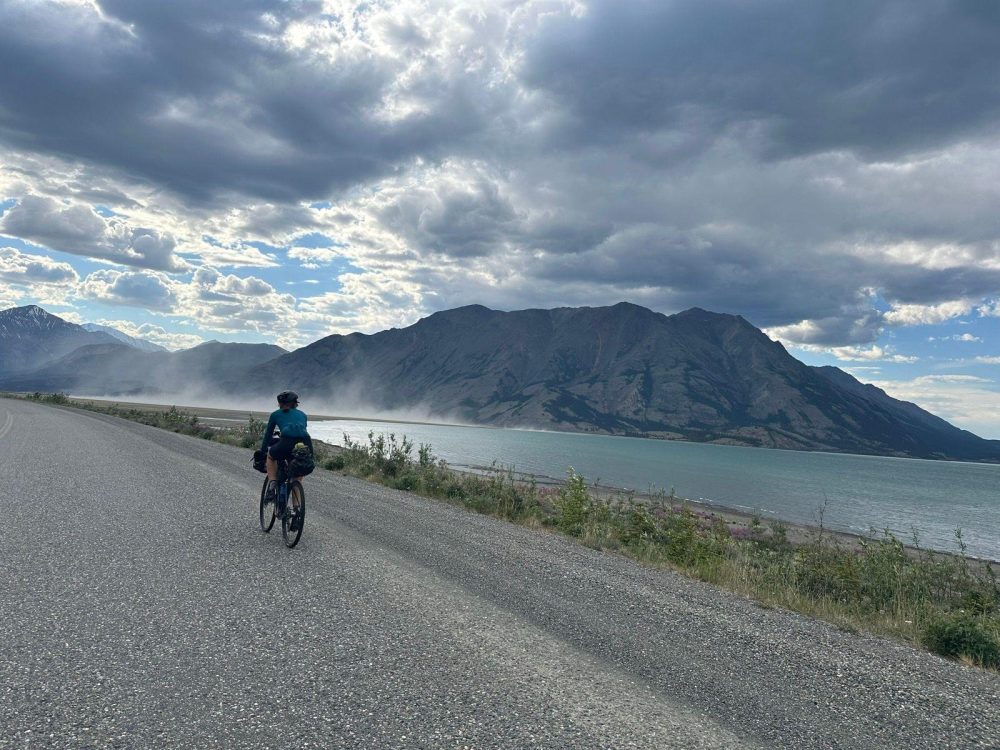
This was our longest mileage day, with 112 miles of riding past Kluane Lake to Congdon Creek Campground. The weather was absolutely perfect, and the mountain views were stunning. Along the way, we saw four black bears, though thankfully none were too close. When we finally arrived at Congdon Creek, we made use of the ‘hiker/biker’ section of the campground, which was secured by an electric fence due to the local grizzly population. Although we didn’t see any grizzly bears, we learned that two had passed through the campground just 30 minutes before we arrived – between the electric fence, bear boxes and long mileage day, we slept quite well that night.
The next day was Wednesday, and with slightly tired legs we covered 78 miles to get to Lake Creek. Although the route was paved and mostly flat, the pavement quality was often rough due to frost heaves and the remoteness of the Yukon – I was grateful to be on a gravel bike, as it kept the riding comfortable and made rough patches feel less treacherous. The traffic along the way was light with courteous drivers and plenty of paved highway shoulder to ride in. Our campground at Lake Creek was a short walk away from a river dip, with more free firewood providing a warm spot to dry out and stave off the lingering campground mosquitos.
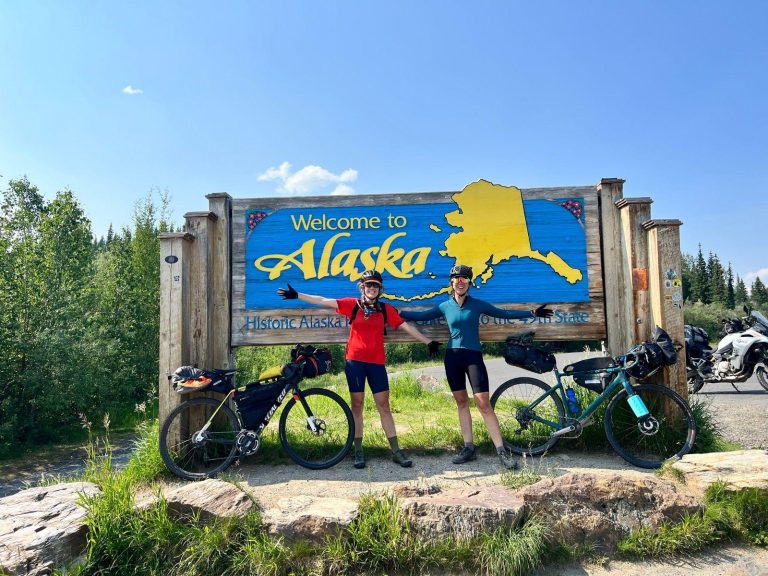
June 27 marked our return back into Alaska as we crossed the border and rode 88 miles to Deadman Lake in Tetlin National Wildlife Refuge. The weather started to heat up, and we quickly realized we should have packed more sunscreen for this inland section of our trip (resupply points in this area consist of an occasional gas station, so if you go be sure to pack carefully and plan accordingly!). A road closure for repaving meant we had to use a construction pilot vehicle for the last 10 miles to camp—otherwise, we would have hit the 100-mile mark again! Deadman Lake was a gem, offering free camping and even free canoes to paddle around and enjoy the lake.
To cap off our first full week on the road, we logged 80 miles, passing through the town of Tok and pushing on to Eagle Trail State Recreation Area. We had originally planned to camp in Tok, but feeling refreshed and motivated, we decided to continue on to even out the mileage with the next day’s itinerary. We started to see more bicycle tourists near this junction, which was a welcome sight after many miles of feeling like the only bicycle tourists around. The road out of town was completely quiet, and we even spotted a porcupine as we neared our campsite.
The next morning, on the recommendation of a ranger we had talked to at Dead Man Lake, we took a hike from our campsite up to a beautiful ridgeline view before riding 77 miles to Red Eagle Lodge in Chistochina. The lodges along this route are steeped in history and provided a welcome break from camping. Along the way, we passed stunning views of the Wrangell-Saint Elias range, and the promise of even more scenic vistas along the Denali Highway kept us pedaling onward. We did run pretty low on calories as we neared the end of our ride, and thankfully made it to the one resupply point option for the day with less than 30 minutes to spare. A sort of ‘supermarket sweep’ ensued when we reached the store stop, and we were reminded of the best part of touring: how delicious any kind of food tastes when you’re burning off calories faster than you can consume them.
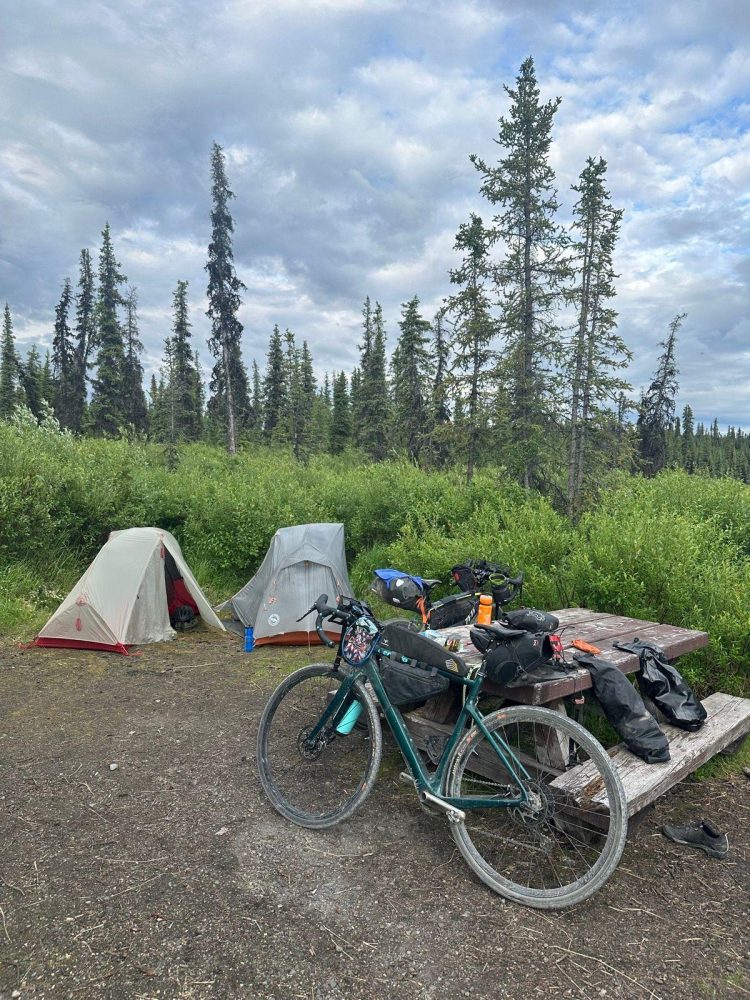
Sunday took us 80 miles to Paxson Lake Campground. We battled a fierce headwind at first, but as we turned north a glorious tailwind raised our spirits and pushed us along toward the much anticipated Denali Highway and made the miles tick by. When we stopped at a lodge to eat dinner, we overheard conversations about the wildfires to the north and near Denali National Park that could potentially impact our route – but all we could do was press on and wait to find out more. That night, the mosquitos were so intense that they sounded like raindrops against our tents, making us grateful for the breeze we had while setting up camp – and the headnets that we had packed!

The next day, we rode 55 miles to Maclaren River Lodge, enjoying our first day on the Denali Highway. Despite its name, this road sees relatively little traffic and offers stunning mountain views, making it a cyclist’s dream. We were again glad to be on gravel bikes, as we experienced more ‘Alaskan pavement’. The views from the saddle made it impossible to complain, however, and we relished each mile of this beautiful section of our route.
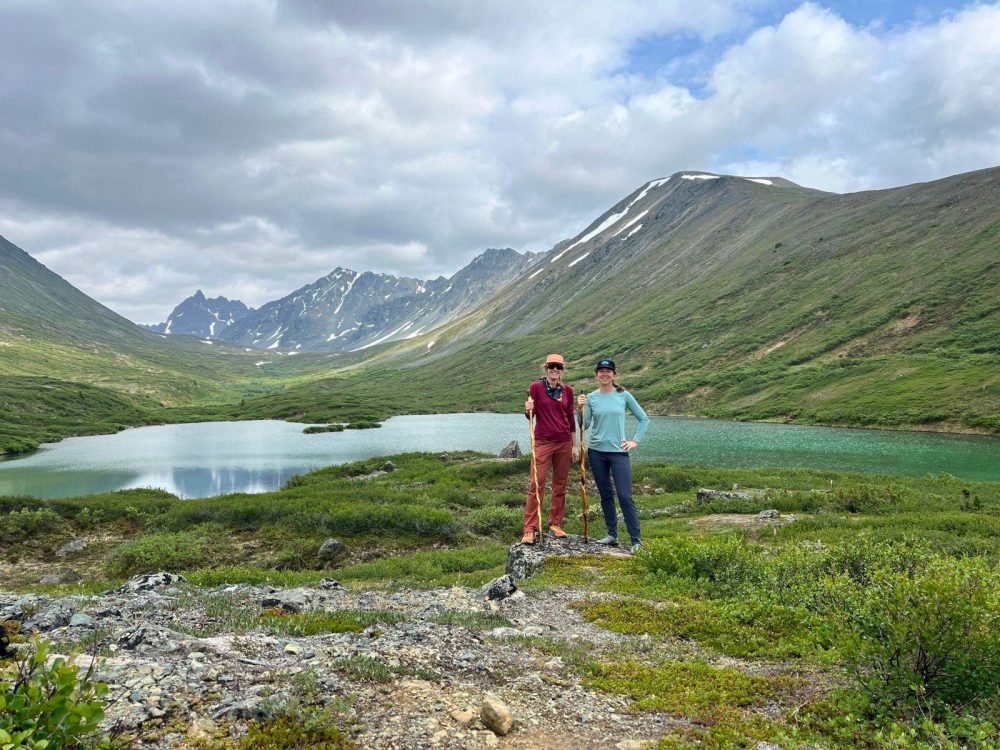
This day was a short 26-mile ride to Alpine Creek Lodge, where we enjoyed a scenic hike that transported us to a landscape reminiscent of Switzerland. Hearing more details about the Denali National Park closure due to a wildfire, we decided to slow down and savor this part of the route, knowing we’d have to turn south soon and head more directly toward Anchorage than we had originally planned.

July 3 brought us through the last 67 miles of the Denali Highway into Cantwell, just south of Denali National Park where we would have to turn south to head away from the wildfire closure. Unfortunately, our streak of good weather ended, as gray skies and thick fog rolled in and obscured our view of Denali – and just about everything else we might see from the road. Despite the weather, we lucked out with a delicious Jamaican restaurant that stayed open late just for us. Though the weather was disappointing, it made us appreciate the streak of good weather we had already enjoyed, and we were glad to know that the rain coming in would likely help put out the wildfires that were causing havoc to the north of us in Denali.
Rolling out of Cantwell the next morning, we rode 40 chilly, wet miles to a little-known train stop called Hurricane. Just past Hurricane Gulch, this is considered the last true flagstop train in America. Laura’s excellent trip planning paid off as she discovered this unique and memorable way to get to Talkeetna. Loading our bikes was easy, and we met several kind and colorful locals while waiting for and riding this train.

We took a rest day in Talkeetna on July 5, quickly falling in love with the town’s charm and delicious bakery options. However, we ran into a hiccup in our plans: a forecast of storms and 40-degree temperatures meant that riding over Hatcher Pass was not going to be an appealing alternative to the highway with heavy car traffic that we also wanted to avoid. Normally we could have hopped on another train, but the wildfire situation to the north of us wasn’t completely cleared, and as a result the ticketing office wasn’t allowing any new reservations. Serendipitously, while discussing this over coffee we met a friendly local named Ruth who offered us and our bikes a ride into Anchorage the next day. We made several new friends while exploring Talkeetna, including Darlene from San Diego, who was doing much of our route in reverse with a scavenger hunt that included every Alaskan side quest you could think of. The instant camaraderie among bicycle travelers and trail angels is one of the best parts of a trip like this!
The next day our new friend Ruth drove us into Anchorage, where we fueled up on pizza and set out on the city’s trails toward a campsite south of town. After riding hundreds of miles with no close wildlife encounters, we nearly ran right into a female moose on the bike path and were slightly alarmed to realize she had two young calves with her. While stopped to make sure we didn’t disturb them, we chatted with two friendly locals who had ridden up behind us who turned out to be the parents of Lael Wilcox. This felt like such a funny coincidence, as we are both huge fans of Lael, and Laura had designed our route years ago while applying for Lael’s Alaska bike tour scholarship program! As we rode on and pushed south toward Bird Creek, we faced fierce headwinds riding down the shoulder of a busy highway to our campsite, where a kind couple in an RV offered us their glamping rooftop tent setup—a luxurious last night of camping together which we gladly accepted, especially since our air mattresses had been slowly leaking throughout the trip. As we nodded off, we marveled at the dramatic ups and downs that wrapped up our second full week of traveling in Alaska.
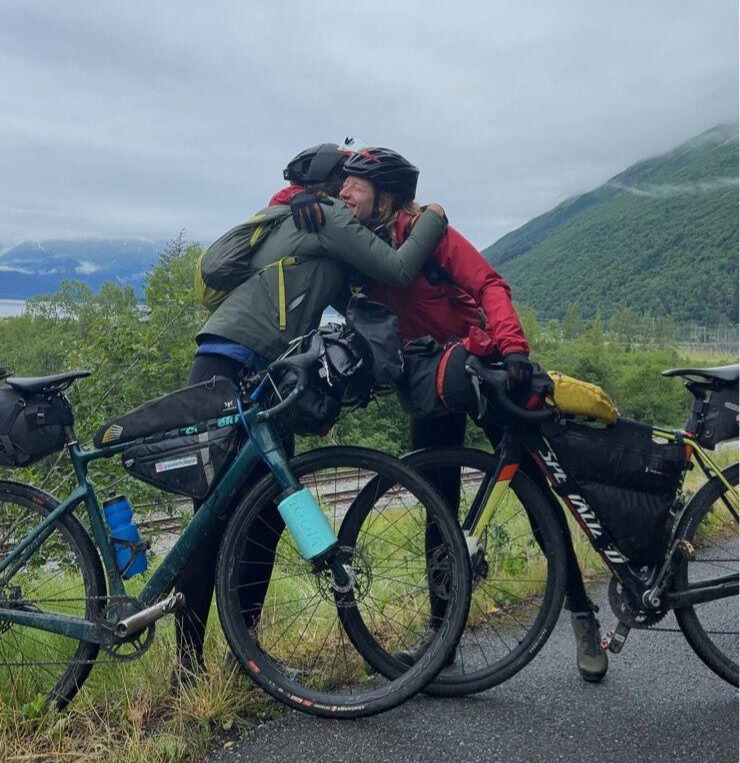
The next morning, we decided to roll a few more miles to Girdwood on the delightfully named ‘Bird to Gird’ trail to check out a summer arts festival we had heard about. We tucked our bikes behind the booth of a friendly local artist and explored what turned out to be easily over a hundred vendors. After picking up some small souvenirs and refueling on calories, it was sadly time to part ways—Laura had to head home, while I had a few extra days before my flight out of Anchorage. I continued south toward the Kenai, with my fingers crossed that the rain would hold off for my last few days of exploring.
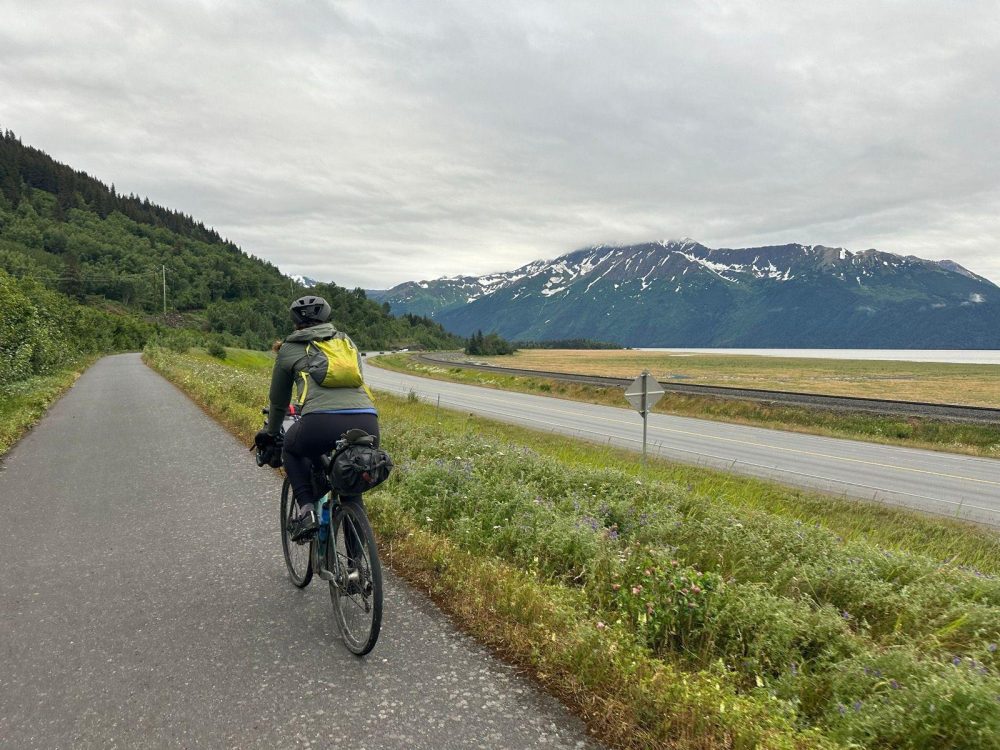
The next morning I woke up in the middle of Johnson Pass, since the evening before I had decided that I was tired of riding near car traffic and was lured onto the famous Kenai 250 route that I had heard so much about from mountain biker friends. This day I rode about 44 miles, which felt much longer since the trails were overgrown by this point in the summer, and overall more suited for unloaded mountain biking or hiking than my loaded gravel bike – thankfully, my components helped make up for my lack of trail riding skill. The beautiful mountain views kept me going, and after popping into town to refuel, I tackled more trails, riding where I could and pushing along the rest.
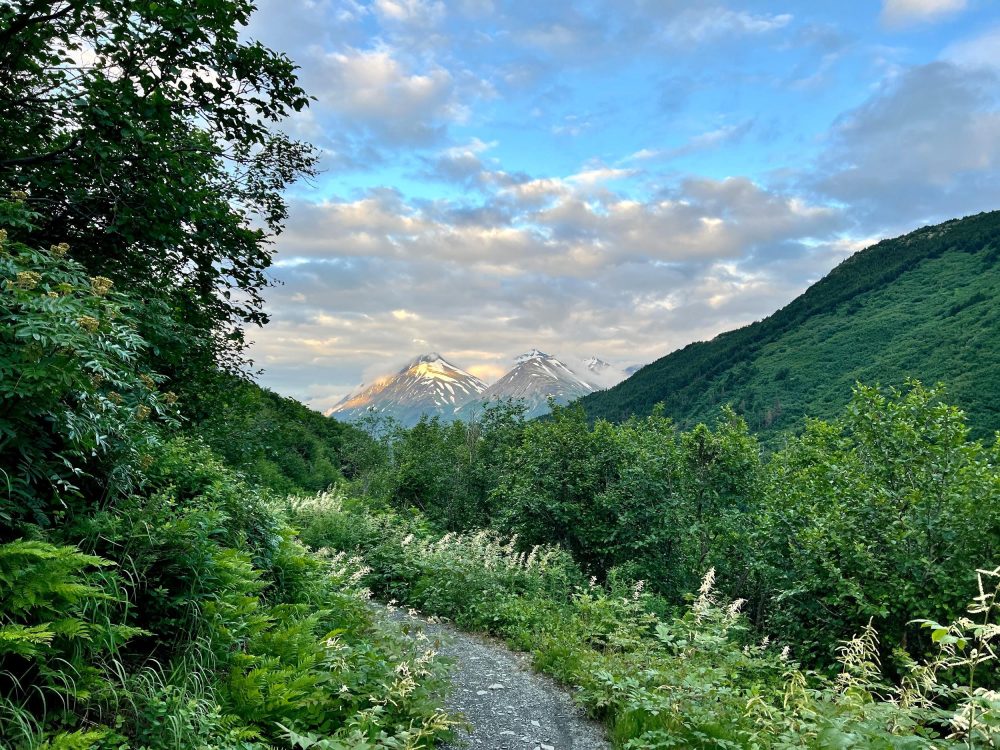
I had one more full day of exploring the Kenai Peninsula trails before heading into Seward where I would catch a train back to Anchorage. I savored what I could of the trek up Devils Creek Pass, where I was rewarded with many rideable miles through valleys of wildflowers and hardly any signs of civilization. Patches of snow crossed the highest points of the trail in this area, and clouds mixed with sunshine to produce more stunning views. After stopping for the largest and most rewarding ice cream of my life at Wild Man’s in Copper Landing, I took one final road closure pilot vehicle near midnight to end the day at Primrose Campground.

I had hoped to visit Lost Lake on my way to Seward, but time was running short. Resolving to come back ot this beautiful area on a future trip for more exploration, I took the road straight into town for some much needed laundry and reorganizing before heading to the train station. At 6 p.m., I boarded the Alaska Railroad train for a leisurely and scenic ride back to Anchorage, where I would fly out the next day to meet up with my partner for the family vacation that had originally drawn me to the Pacific Northwest area this summer.

Reflecting on this incredible trip, I’m once again grateful for the adventures that my bike takes me on. The miles flew by, with my Cane Creek eeSilk components smoothing out the bumps in the road and allowing me to focus on the adventure, rather than the discomforts of long-distance riding or worries of mechanical failures along the way. Whether it was smooth pavement, rough frost-heaved roads, or remote trails, my bike was up to the task, allowing me to enjoy every mile in the Alaskan wilderness. If you’re planning your own bikepacking trip and want to ensure comfort and reliability, I highly recommend outfitting your bike with Cane Creek components. They’ve been a game-changer for me, and I’m already dreaming of my next adventure.
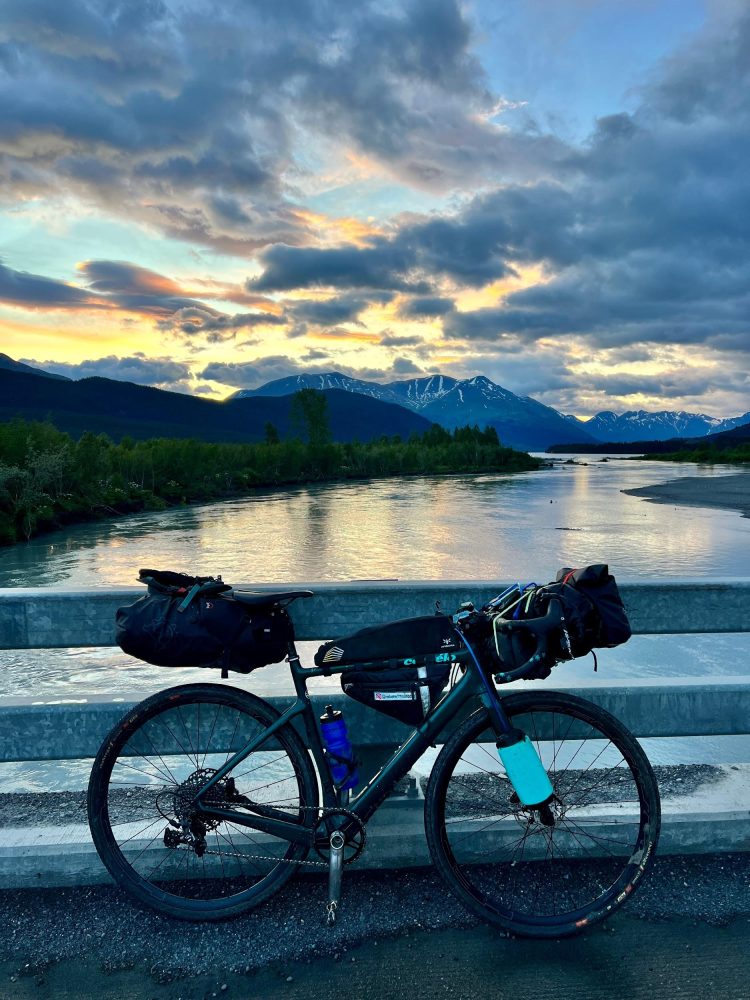
Monday: 10:00 am – 5:00 pm
Tuesday – Thursday: 10:00 am – 5:00 pm
Friday: 10:00 am – 5:00 pm
Saturday – Sunday: Closed